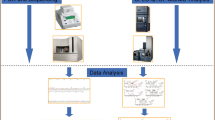Abstract
Jujube Seed is a crude drug defined as the seed of Ziziphus jujuba Miller var. spinosa Hu ex H.F. Chou (Rhamnaceae) in the Japanese Pharmacopoeia (JP). Most of the jujube seed in the Japanese markets is imported from China, with the rest obtained from other Asian countries. Here we confirmed the botanical origins of jujube seeds from both China and Myanmar by a DNA sequencing analysis. We found that the botanical origins of the crude drugs from China and Myanmar were Z. jujuba and Z. mauritiana, respectively. Although the jujube seed from China conforms to the JP, that from Myanmar does not. A method for discriminating jujube seeds from China and Myanmar using a chemical approach is thus desirable, and here we sought to identify a compound specific to Z. jujuba. Jujuboside A (1) was identified as a compound specific to Z. jujuba. To establish a purity test of Jujube Seed in the JP against Z. mauritiana, we fractionated the extract of Z. mauritiana seeds and identified frangufoline (2) and oleanolic acid (4) as the marker compounds specific to Z. mauritiana. Thin-layer chromatography (TLC) and gas chromatography-mass spectrometry analyses revealed that the latter compound was useful for testing by TLC analysis. The established TLC conditions were as follows: chromatographic support, silica gel; developing solvent, n-hexane:EtOAc:HCOOH = 10:5:1; developing length, 7 cm; visualization, diluted sulfuric acid; R f value, 0.43 (oleanolic acid).




Similar content being viewed by others
References
Jiang JG, Huang XJ, Chen J, Lin QS (2007) Comparison of the sedative and hypnotic effects of flavonoids, saponins, and polysaccharides extracted from Semen Ziziphus jujuba. Nat Prod Res 21(4):310–320
Wang LE, Bai YJ, Shi XR, Cui XY, Cui SY, Zhang F, Zhang QY, Zhao YY, Zhang YH (2008) Spinosin, a C-glycosides flavonoid from semen Ziziphi Spinozae, potentiated pentobarbital-induced sleep via the serotonergic system. Pharmacol Biochem Behav 90(3):399–403
Crude Drugs Committee of Japan Kampo Medicines Manufacturers Association (2013) The 2nd report on consumption of raw materials for crude drug in 2009 and 2010 fiscal years. Tokyo, Japan, p 4
Personal communication from Dr. H. Yamaji of Tsumura Co. and Dr. Y. Yamamoto (5th author)
Thompson JD, Higgins DG, Gibson TJ (1994) CLUSTAL W: improving the sensitivity of progressive multiple sequence alignment through sequence weighting, position-specific gap penalties and weight matrix choice. Nucleic Acids Res 22:4673–4680
Tschesche R, Last F (1968) Rhamnaceae alkaloids. V. Franganine and frangufoline, two additional peptide alkaloids from Rhamnus frangula. Tetrahedron Lett 25:2993–2998
Han BH, Han YN, Park MH, Park JI, Park MK (1990) Cyclopeptide alkaloid from Sanjoin. Saenghwahak Nyusu 10(4):239–245
Liu HB, Zheng XD, Jian YF, Liu JX, Zhu JH (2011) Constituents of the root of Anemone tomentosa. Arch Pharm Res 34(7):1097–1105
Razborsek MI, Voncina DB, Dolecek V, Voncina E (2008) Determination of oleanolic, betulinic and ursolic acid in Lamiaceae and mass spectral fragmentation of their trimethylsilylated derivatives. Chromatographia 67:433–440
Sang T, Crawford DJ, Stuessy TF (1995) Documentation of reticulate evolution in peonies (Paeonia) using internal transcribed spacer sequences of nuclear ribosomal DNA: implications for biogeography and concerted evolution. Proc Natl Acad Sci USA 92:6813–6817
Panseeta P, Lomchoey K, Prabpai S, Kongsaeree P, Suksamrarn A, Ruchirawat S, Suksamrarn S (2011) Antiplasmodial and antimycobacterial cyclopeptide alkaloids from the root of Ziziphus mauritiana. Phytochemistry 72:909–915
Acknowledgments
This work was supported by Health and Labour Sciences Research Grants in Japan.
Author information
Authors and Affiliations
Corresponding author
Electronic Supplementary Material
Below is the link to the electronic supplementary material.
Rights and permissions
About this article
Cite this article
Oshima, N., Zaima, K., Kamakura, H. et al. Identification of marker compounds for Japanese Pharmacopoeia non-conforming jujube seeds from Myanmar. J Nat Med 69, 68–75 (2015). https://doi.org/10.1007/s11418-014-0864-6
Received:
Accepted:
Published:
Issue Date:
DOI: https://doi.org/10.1007/s11418-014-0864-6




